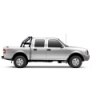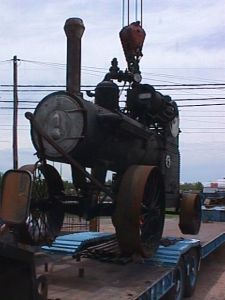The Buenos Aires Art Dealer, will soon be back on line, this year 2009, for its spring edition, ....
Following the success our articles have in world wide forums and webzines, Art Dealer, Bob Frassinetti's newest project goes big.
Our specialized team of journalists, researchers and trend hunters will provide all world wide readers new articles each season, every three months.
Artdealer online magazine offers our readers insightful articles on what's going on in Buenos Aires and Argentina in terms of antiques, collectibles & art, travel & leisure. A careful and experienced look into BA's hottest spots. We share with you great tips on what to do when in BA, where to go, shop and stay. We aim to recover from oblivion for world wide art fans great forgotten Argentinean artists, as well as to position Argentinean Collectibles where they should be, providing unknown information on production and producers, history of these items and special features, key to the collector and artdealer from all over the world.
Updated in 2012 as much for iPhones on iArtdealer as on the web at The Buenos Aires Artdealer NET
Google us!
« previous
|
next »
Read about Steam and Tractors
Tractors in Argentina, a love story.Hope you will enjoy reading as much as I
have writting it! Bob Frassinetti,Buenos Aires,Argentina.
Argentina’s main economic resources has always been in the field: grains,
cows, sheeps have been an incredible input to our economy throughout
history.
Technology has always been men’s best friend in the country side, for all
the days choirs can be even more exhausting if the only power involved is
human strength. As far as the one can trace back history men has leaned on
other animals to produce what he and his family needed to survive. Closer in
history, animal strength was combined with other man-made technical
appliances to use in production. In the fields, plow was one of the biggest
and most important inventions. First powered by men, it was latter men was
the one who guided the ox –the hard work now rested on their back-, and even
closer to our days, horses replaced oxes in those hard choirs.
It would take over 50 years for men to come up with a replacement for
horses: tractors.
There had been several unsuccessful attempts to use locomotives as a
mechanical traction for the plow, firstly with the Fowler system, used for a
while in the area of Bell Ville in 1868 and then during the early years of
the 20th century there were some plows with “direct traction”. The result of
those experiments was a much more expensive traction system than the
original horse strength. However these attempts were the foundation for a
revolutionary invention: Tractors.
By mid 1892, in the USA an alternative to the horse plow system was
successful. Tractors were born.
In Argentina the first registered tractor importation was in 1906. It’s hard
to know about quantities, for at first these items were registered under
locomotives in customs. Later on they are registered as “motors”, therefore
we can’t calculate for sure the amount of tractors that were imported in
those days. It is only by mid 1920s that we have statistics on this matter.
The information in those documents show that these machines were specially
incorporated in big fields, for it wasn’t profitable in small fields.
The mass use of tractors in Argentina only began when those machines were
locally produced in the 1950s –without the importation costs, these machines
were much more affordable; plus there were local tractor versions that had
been specially designed for the standard Argentinean field.
The first imported tractors were powered by steam engines. The application
of these kind of engines to tractors was revolutionary for the need of a
controlled use of power was very much important in these kind of
locomotives. John Deere was one of the main providers to Argentina of these
machines.
Soon after this invention took off, tractors suffered some alterations, such
as the replacement of steam engines for diesel or kerosene ones. Some of the
main international manufacturers provided the Argentine market at that time.
But it wasn’t till mid 1940s when Argentina took the autoindustry in its
hands.
The folk story tells that Perón, who had established a love-hate
relationship with the United States had broken up all commercial tides, and
while Argentina stoped selling them some of the most important prime
materials the US bought, they wouldn’t sell one manufactured item to the
country. One of the most famous frases at that time was “If the US wants to
paint their houses with our line oil they’ll have to bring their houses down
to Argentina…”the reply of some of the most liberal sectors in our country
was –regarding the importance of our importation of toilet paper
manufactured in the US- “so, when we want to go to the toilette we might as
well travel all the way up to the States for some toilette paper?”.
No house came to Argentina, and no one traveled that much for some toilette
paper, but the impact of this closure was huge.
In 1948, Perón inaugurated the IAME –mechanical industry company owned and
run by the Argentinean state- with the aim of producing tractors in the
country.
A very large group of experts began took over the titanic task of creating
from scraps a mechanical industry. The first move this group made was a
survey on what local farmers preferred on this matter. The most voted answer
was the German Lanz Bulldog, produced in Mannheim, for it had a simple motor
that could be easily fixed if there was any trouble, it only needed heating
before use, and this could be done using lamps powered by a kerosene pump,
hence there was no need of electrical power… Plus this tractor’s motor could
be worked with alternative combustibles –at that time Diesel fuels were very
expensive and rare to find in the country- such as a mix of kerosene and
used oil, or even regular oil and animal fat. It served it purpose in the
fields and it was very cheap to maintain. And its power was enough to remove
the old steam boilers for thrashing line and wheat machines.
The inspiration came from the Lanz German tractor. Many units of this
machine were brought to the country and mechanics and technicians began to
work on a “national model” tractor with a two time motor with only one
cylinder of 55HP, that could traction a four plowshare of 14 inches.
The result was a local very cheap version christen as the Pampa. There were
3500 Pampas made in the country from 1952 to 1963.
At the same time, some other companies began to settle down in the country
to locally produce tractors, for it was economically more profitable than
exporting them and there was an unexploded market anxiously demanding these
products. Fiat Conrad was one of the first ones to come to Argentina in
1954. Later on came John Deere in 1958. Two of the most important ones at
the time, adapting many of their models to the local market as well as
offering their standard ones to the Argentine market. The move was a
success.
Soon after, not only tractors were produced locally but automobiles too. The
auto industry grew at an increasing rate till the 70s, when due to a world
economic crisis, sales went down. However this industries kept on being the
most profitable ones in the country as well as the region for a long time.
(Till the 1990s when Brazil took over the market with more competitive
prices)
Together with this upraise of the farm industry in Argentina, the toy
industry began a golden era. Toys are a reflection of reality, and at that
time, our rural country side was growing at an extraordinary rate,
positioning Argentina very well in the world.
Many of the most important toy factories such as Duravit, Mataraso, Saxo,
Buby and even Muky made farm toys or farm related toys.
For example Buby (diecast toys)made a Mercedes Benz lorry directly involved
with
the transportation of cereals from the interior farm lands of the
Argentinean dock to sell abroad, on the box there was an Argentinean Country
side postcard, this company is an excellent example of a high quality
diecast toy produced in Argentina.
Yet another great an rare example is a the toy version of the farm implement
tank that was specially made for the company that manufactured them for real
farms, such as Gentili Casilda. Much like Sigomec was for John Deere.
All toys related to this period are an "excellent find" for any Farm toy
collector. This period from the 50's to the 70's are known as the vintage
period for any collector.
It was such the success of farm items at that time that a company know also
well known by collectors, Matarazzo started as a tin toy company, but
quickly began also to work in the rural field producing and processing
cereals. Nowadays this company is still working in the food business. It was
just a perfect couple, farm toys and -industrial- farm products.
Those golden years of the argentine field can be relived in many ways, not
only through history books but tracing back their footsteps through hunting
down the material treasures from them: the tractors. There are still many of
them spread around the Argentine territory. These hidden treasures are just
awaiting to be found and taken care of. A perfect collector’s vacation at an
unspoiled world’s paradise, adventures, history and one of a kind treasures.
Bob Frassinetti: For more information: Email: Bob Frassinetti. Press here to go back to web blog:Daily Updates on Art, Antiques, Collectibles as well as travel information for Buenos Aires, Argentina. Phone me thru Skype, ID: Bob Frassinetti or you can also chat with me thru Yahoo, press here:
Yahoo Contact
Find me on MySpace and be my friend!
The Buenos Aires Artdealer Net
iArtdealer Biz for iPhones
The Buenos AIres Artdealer Net
About Bob Frassinetti Biz
Bob Frassinetti More Information
Art Dealer on Face Book
Route 40 Argentina
Calender on Yahoo
Map Talks and Bob Frassinetti
Google Maps
iArtdealer Biz for iPhones
The Buenos AIres Artdealer Net
About Bob Frassinetti Biz
Bob Frassinetti More Information
Art Dealer on Face Book
Route 40 Argentina
Calender on Yahoo
Map Talks and Bob Frassinetti
Google Maps






